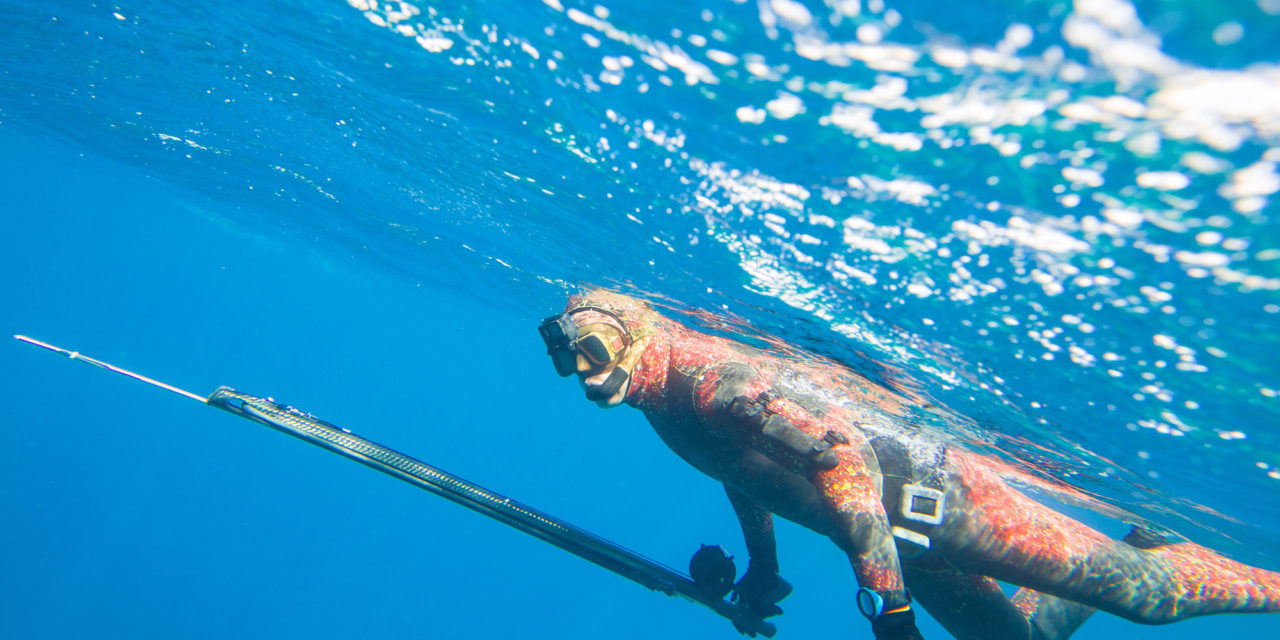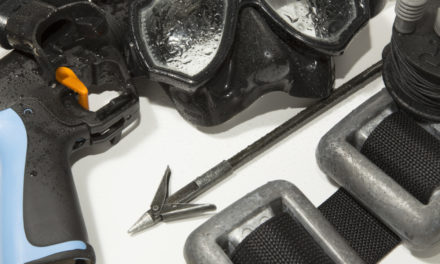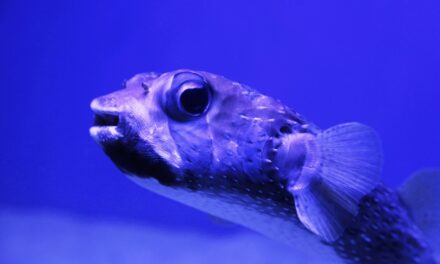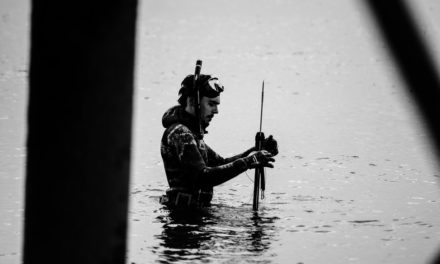So you have done some spearfishing and have enjoyed your time in the water and want to spend more time spearfishing and of course not wanting to get cold is a concern. Plus getting the right wetsuit is a great way to protect you from other elements you might encounter, for example, reefs, jellyfish, and a potential nibble from your prey…that was a joke.
Maybe you have rented a wetsuit and now feel it’s time to invest in your own. This guide will help you decide which important things you should consider when buying a wetsuit for spearfishing and direct you to the best spearfishing wetsuit that fits your needs and budget.
First, before we suggest our top recommendations, let’s take a look at several qualities you need to take note of. Such as thickness, style, material, fit, and color.
Thickness:
This might sound obvious, but the thickness of a wetsuit you should consider depends greatly on where you are spearfishing. For example are you spearfishing for grouper off the beaches of Florida or are you going for a giant lingcod eighty feet down in Carmel, California? In most cases, Florida would require a 1″ – 1.5″ mm wetsuit whereas Carmel would require a 5″ mm plus wetsuit for the cold water. Below will give you an idea of thickness to consider when buying a wetsuit.
3 mm (0.12”) Spearfishing Wetsuits
If the water is above 26C, then a 3 mm wetsuit is the best choice for going spearfishing. In other instances, if the temperature is above 26C, then you need a thinner spearfishing wetsuit.
5 mm (0.2”) Spearfishing Wetsuits
This thickness is great for waters with temperatures of about 10 to 26 degrees (10F to 79F). These types are also good choices for all-year-round use if you don’t stay in the water for too long, probably for up to an hour.
7 mm (0.3”) Spearfishing Wetsuits
This type of suit is actually best for all-year use in most of the places that you might want to go hunting in. However, it is best if you use it for water temperatures between 4 and 20 degrees (39F to 68F).
Source: sawflow.com
Style:
When it comes to style or type of wetsuit there are two main ones. An all-in-one or a two-piece. An all-in-one or full-body wetsuit typically runs full length from arms to legs…like a surfer wetsuit. A two-piece or “Farmer John” style suit composed of a one-piece top with long sleeves and a second piece “overall” sleeveless arms with full-length legs.
It depends on the suit and in most cases it comes down to thickness and material, but typically I like to use a two-piece. Mostly due to the temperature of the water, I will just use the “jacket” part of the suit, if I can get away with it. The more mobility the better and having less suit the better in my opinion. I will also cover the right fit later in this guide.
Material:
When considering purchasing a spearfishing wetsuit you will come across open-cell and closed-cell neoprene wetsuits. On average you will find open cell wetsuits are more expensive, warmer and of higher quality.
When neoprene is manufactured for wetsuits it’s cut into sheets. The thickness can vary from 1” to 8″. If the neoprene is not treated by adding a lining of additional material like polyester or silicone this it what’s called an open cell suit, if the material is added closing the cells it’s a closed cell suit.
Typically an open cell neoprene suite will be warmer compared to a closed cell suit. This is because the open cell suit sicks closer to the body creating a tight seal. There will still be a small amount of water between you and an open cell wetsuit. This small amount of water will warm to your body temperature…keeping you warm. In contrast with a closed cell suit, there will be more water between you and the neoprene. Thus, the water will eventually cool to the outside water temperature. In my opinion, an open cell wetsuit will keep you warmer.
In my experience, a closed-cell wetsuit will slip on more easily than an open-cell suit (you need to try it for yourself). I have used sunscreen or some dish soap to help put on an open cell suit…very useful. A clue to tell if a suit is open or closed is that a closed cell suit will look more rubbery and as mentioned typically will cost less compared to an open cell suit.
You will find exterior lining on many open cell spearfishing suits. This provides flexibility, warmth, and protection from the elements. The interior of an open cell suit will also form more naturally to your body and have a softer feel compared to a closed cell suit.
Fit:
If you are looking into buying the right wetsuit of course getting the proper fit is of utmost importance. Not spending the time getting fit for the right wetsuit can result in a cold and uncomfortable dive, regardless of the style of the wetsuit you choose.
Things to look for and to consider when trying on a wetsuit:
- Snug, but not too tight. You don’t want to cut off any circulation.
- A good range of motion with your legs and arms.
- No extra folds of material.
- Your Kneckline should be comfortable.
- Do you need a hood?
Just an added note on comfort. I can’t stress it enough. Getting sized incorrectly can turn a great dive into a small nightmare. Again, take your time and remember the considerations I made above. Being comfortable when diving is of utmost importance. You don’t want any material rubbing against you and of course, the objective is not to get cold.
Size Chart:
| SIZE | HEIGHT (CM) | WEIGHT (KG) | CHEST (CM) | WAIST (CM) | HIPS (CM) | NECK (CM) | INSEAM (CM) |
|---|---|---|---|---|---|---|---|
| XS | 5’6″ – 5’8″ | 125 – 140 | 34″ – 36″ | 27″ – 29″ | 33″ – 35″ | 14.5″ | 26.5″ – 27.5″ |
| S | 5’7 1/2″ – 5’9 1/2″ | 135 – 155 | 36″ – 38″ | 29″ – 31″ | 34″ – 36″ | 15″ | 27.5″ – 28.5″ |
| ST | 5’9″ – 5’11” | 140 – 160 | 36″ – 38″ | 29″ – 31″ | 34″ – 36″ | 15″ | 28.5″ – 29.5″ |
| MS | 5’7 1/2″ – 5’9 1/2″ | 140 – 160 | 38″ – 40″ | 31″ – 33″ | 35″ – 37″ | 15.5″ | 27.5″ – 28.5″ |
| M | 5’9″ – 5’11” | 150 – 170 | 38″ – 40″ | 31″ – 33″ | 35″ – 37″ | 15.5″ | 28.5″ – 29.5″ |
| MT | 5’11” – 6’1″ | 155 – 175 | 38″ – 40″ | 31″ – 33″ | 35″ – 37″ | 15.5″ | 29.5″ – 30.5″ |
| LS | 5’9″ – 5’11” | 165 – 185 | 40″ – 42″ | 33″ – 35″ | 37″ – 39″ | 16″ | 28.5″ – 29.5″ |
| L | 5’11” – 6’1″ | 170 – 190 | 40″ – 42″ | 33″ – 35″ | 37″ – 39″ | 16″ | 29.5″ – 30.5″ |
| LT | 6’0″ – 6’2″ | 180 – 200 | 40″ – 42″ | 33″ – 35″ | 37″ – 39″ | 16″ | 30.5″ – 31.5″ |
| XLS | 5’8 1/2″- 5’10 1/2″ | 180 – 200 | 42.5″- 44.5″ | 34.5″- 36.5″ | 39″ – 41″ | 16.5″ | 29.5″ – 30.5″ |
| XL | 6’0″ – 6’2″ | 190 – 210 | 42″ – 44″ | 35″ – 37″ | 39″ – 41″ | 6.5″ | 30.5″ – 31.5″ |
| XLT | 6’2″- 6’4″ | 200 – 220 | 42″ – 44″ | 35″ – 37″ | 39″ – 41″ | 16.5″ | 31″ – 32″ |
| XXL | 6’0″- 6’2″ | 210 – 230 | 44″ – 46″ | 37″ – 39″ | 41″ – 43″ | 17″ | 31″ – 32″ |
| XXXL | 6’0″- 6’2″ | 220 – 240 | 46″ – 48″ | 39″ – 41″ | 44″ – 46″ | 17.5″ | 31″ – 32″ |
Source: O’Neil
Color:
Does the color of your spearfishing wetsuit matter? You are seeing more and more camouflage wetsuits these days compared to the traditional black. Many avid spearos are leaning towards camouflage, other traditionalists think black is just fine. I have used both, but currently, I’m using camouflage. The thought of camouflage is that you can blend into the environment. Ask yourself a couple of questions when considering buying a camouflage wetsuit. Will I mostly be spearfishing in open water or through kelp or searching in rocks, etc? If it’s open water consider a blueish suit. If it’s kelp/rocks look at purchasing a brown or green, or even a combination of both to blend into the environment. For me, the verdict is still out on which I prefer, but as I mentioned I’m giving camouflage a try and I must say it seems to be working.
Top Recommendations:
The following spearfishing wetsuits are my top recommendations. If you asked me, “Tom, I just want to know what the best wetsuits are to spearfish in…what are they?” Well, here they are. Grab one and go get a nice fish!
2. Seavenger Odessey 3mm for warm water
- An all-around good wetsuit for spearfishing, scuba diving, and surfing (warm water, but check out their other suites depending on your conditions)
- Closed cell wetsuit
- Padding on knees
- Easy donning and doffing
3. O’Neill Reactor 3/2mm Back Zip Full Wetsuit
- Great Neck Seal
- Very Comfortable
- Warmer Waters
- Closed Cell Neoprene
- Reinforced Knees
- One Piece
- Back Zipper
- Great Reviews
- All Around Great Wetsuit






